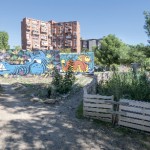
Our magazine’s 30th anniversary and 100th issue have arrived at the same time. On this special occasion we invited writers and activists to tell us about their Barcelona

Our magazine’s 30th anniversary and 100th issue have arrived at the same time. On this special occasion we invited writers and activists to tell us about their Barcelona

The vitality of a city like Barcelona can be better measured by the amount of conflict that it is capable of containing and managing, rather than by the hegemony of a homogenising logic of consensus. Opting for a city of citizens means avoiding borders, segmentation and the commercial appropriation of what belongs to everyone.

Fighting the abuse of power by politicians and their parties; preventing private economic powers and their networks from influencing issues of general interest. This is a proposal for political construction with the involvement of people and designed to promote their freedom.

Let’s place ourselves on the absolute fringes of the citizenry – in the prison system. There we will discover an unlikely way in which the prison population rubs shoulders with the rest of society: through artistic creation.

If participation means contributing to the development of a city and not to its planned obsolescence, then the participation of women is still sorely lacking.

We are in dire need of a debate on the value of vernacular memory for historical coexistence in the city, something that the law does not always favour. One has to understand the city as a palimpsest, which under its surface hides successive layers of human use.

The waves of immigrants from the middle of the 20th century made poor outlying neighbourhoods a disturbing reality at a time when immigration was seen as a problem to be solved through public assistance. To what extent does the stigmatisation associated with peripheral neighbourhoods persist?

Humans are fast to learn about the world. We love the land and the people who gave us life. Yet we are able to be amongst other people, to go to other lands, to learn other languages and customs; all without forgetting about our roots.

A mouse is a peripheral. Anyone who has set up a computer knows this. Mice and peripheral areas, neighbourhood policies. A periphery that no longer seems to exist and yet has never stopped existing. A periphery more about urbanites than urbanists. The districts have been transformed, but there is still no justice.

There are large capitals (Rome, Paris and now New York – capitals of provincialism), there are cities of exceptional beauty (Venice) and there are cities with a special attraction (Marseille, Amsterdam, New Orleans). It’s as if the cities were people. Barcelona has been amongst those in the lattermost category. But if things carry on in the same direction, it will soon be removed from the list. Barcelona will then be a sad city, like a run-of-the-mill Dublin, without Joyce.